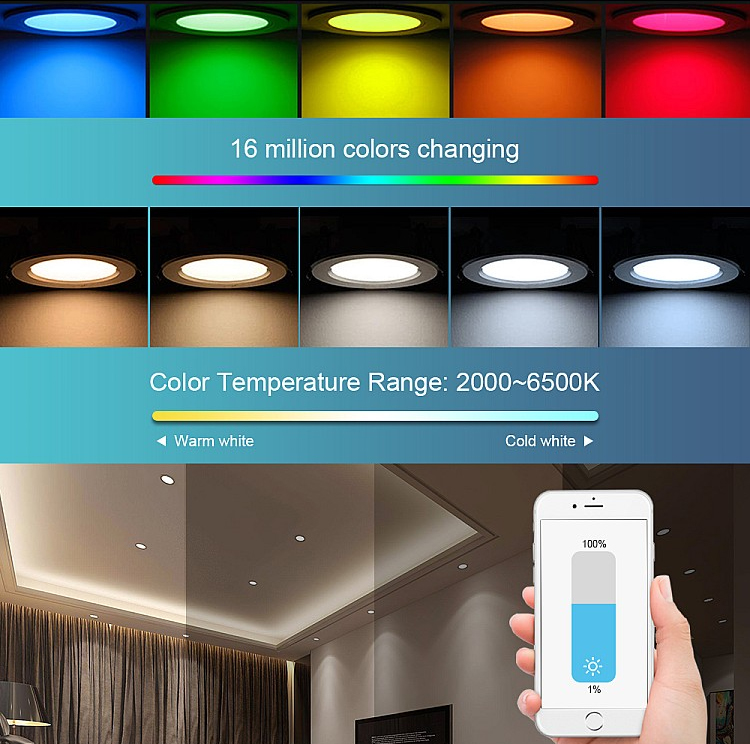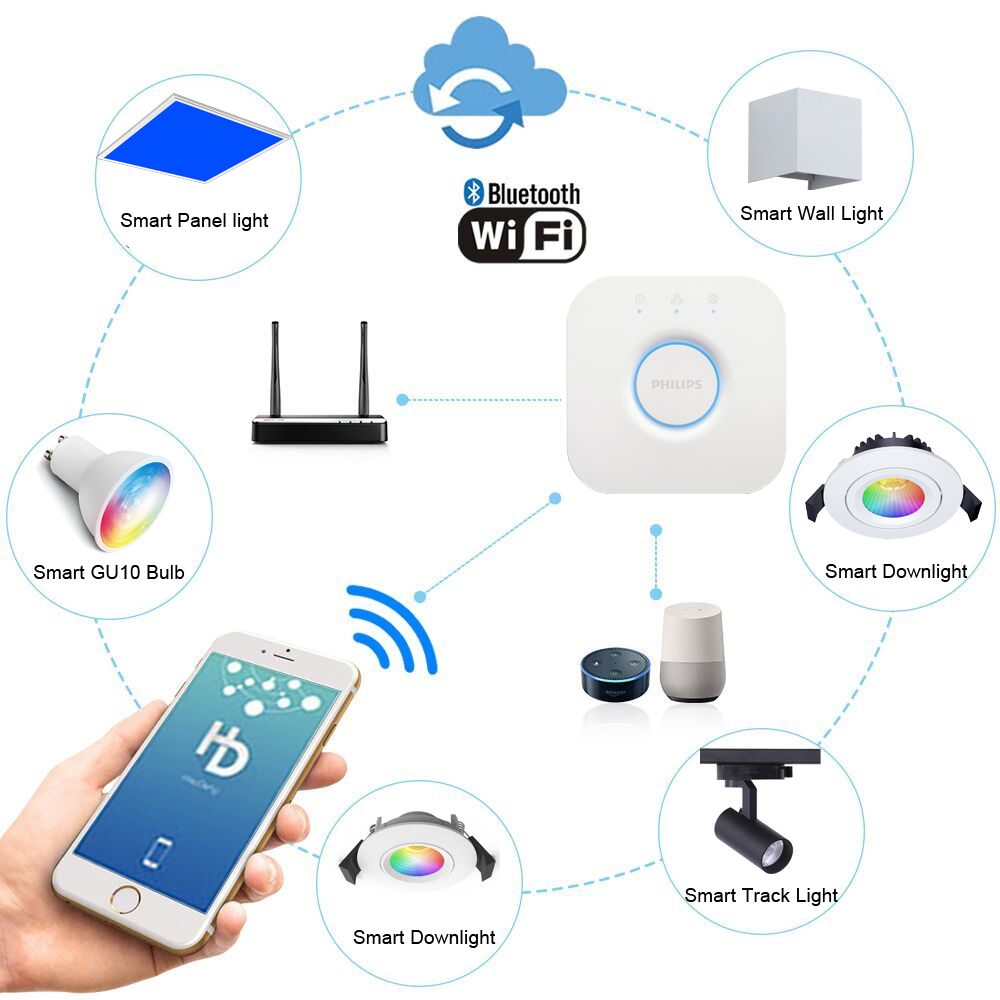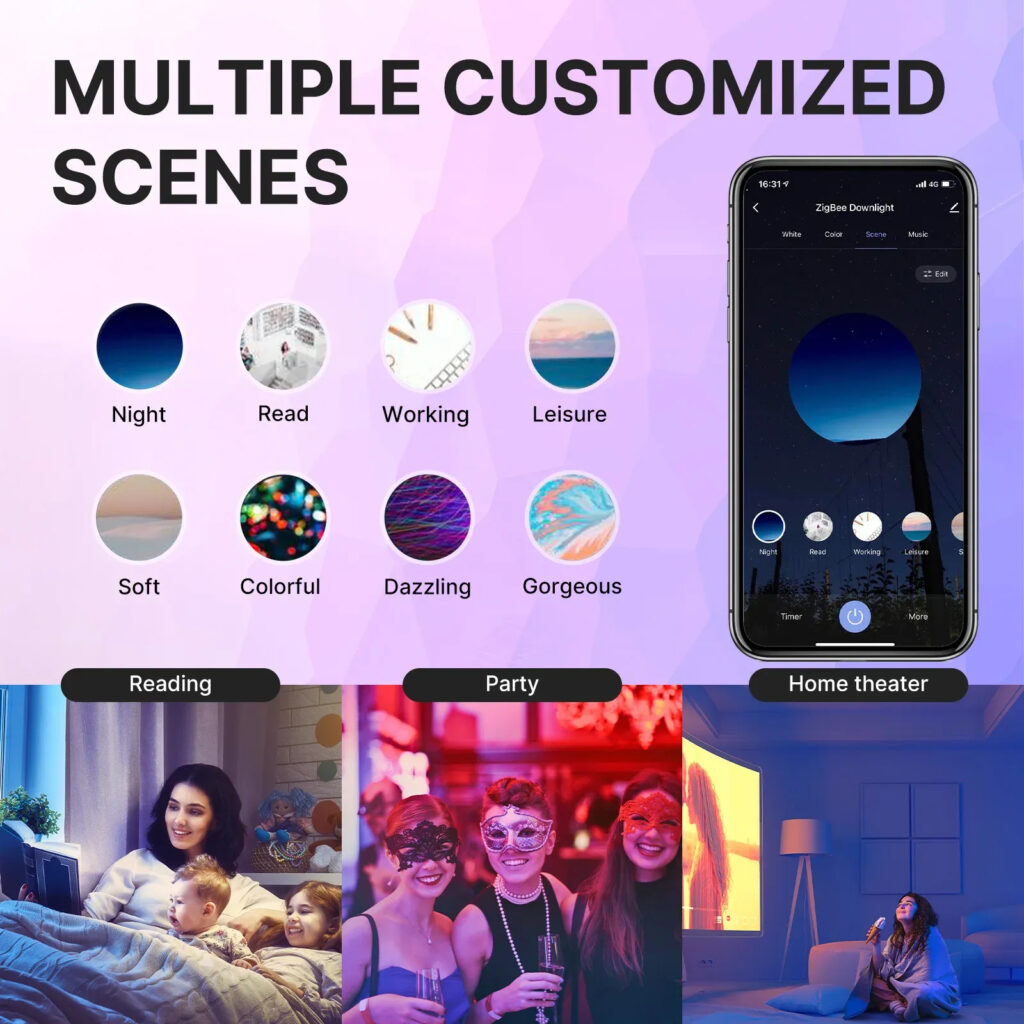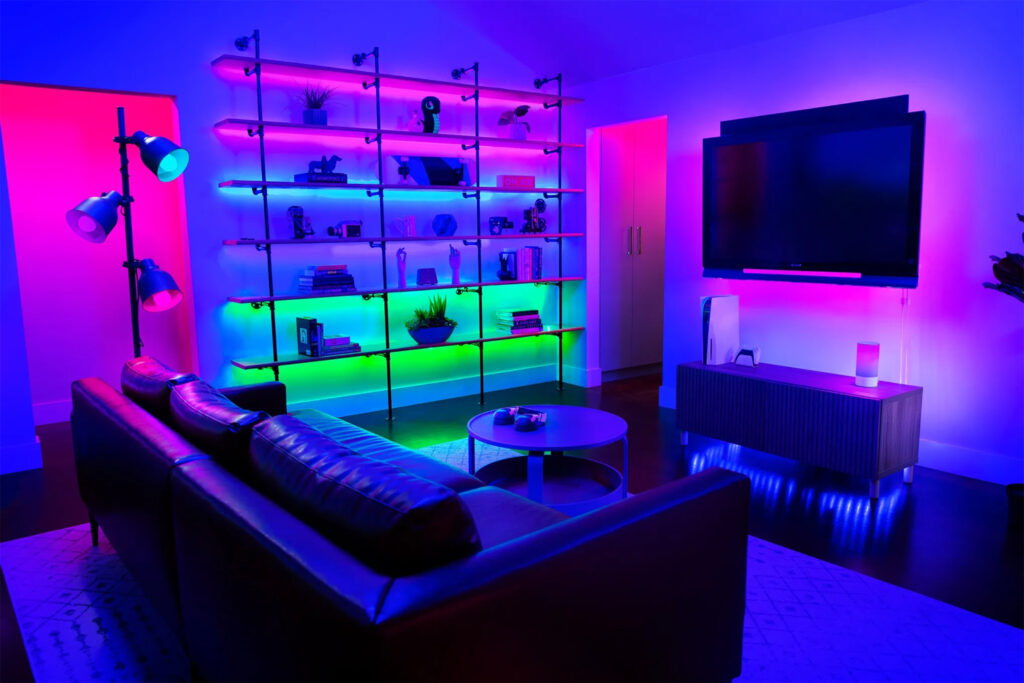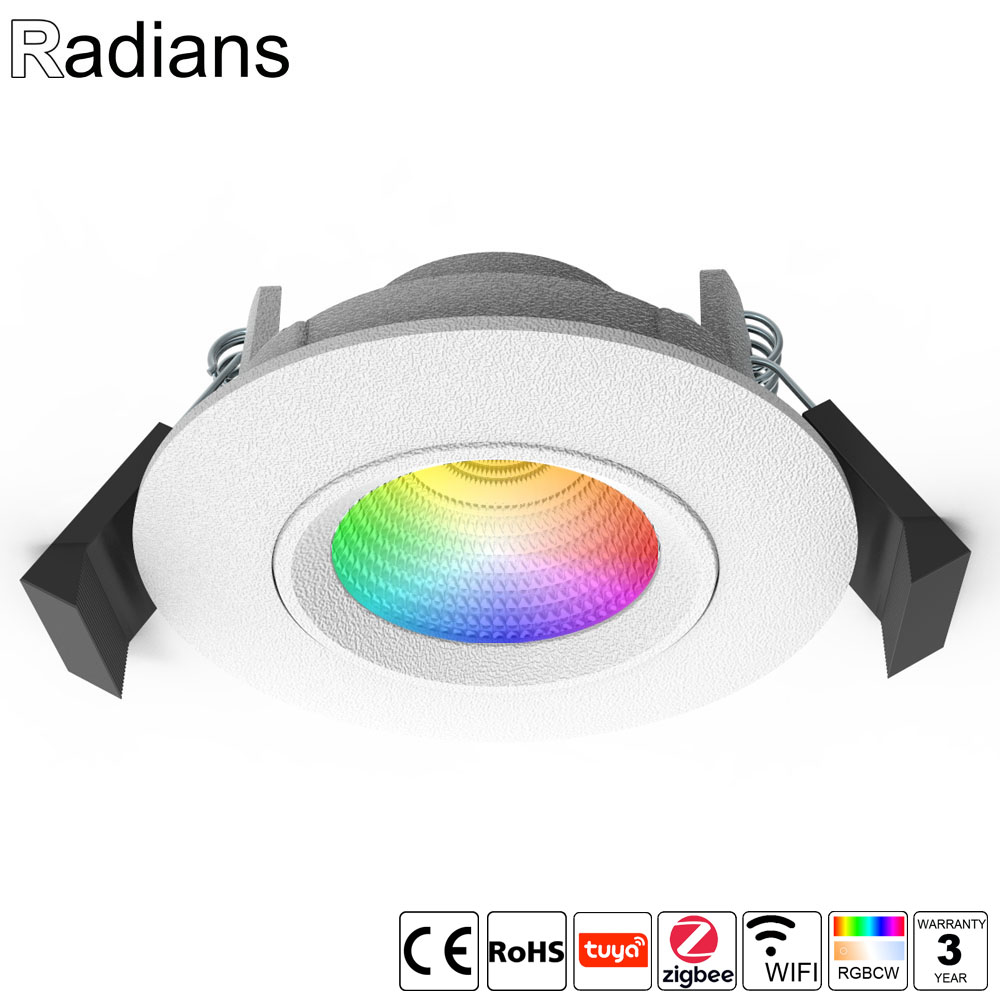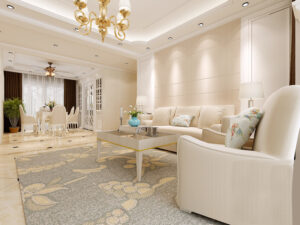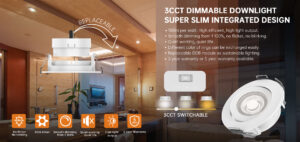Across Europe, the lighting industry is experiencing a rapid transformation as smart LED downlights merge with the Internet of Things (IoT). This synergy is redefining how homes, offices, and public spaces are illuminated-delivering unprecedented levels of energy efficiency, control, and user comfort. In this comprehensive guide, we explore the latest technologies, market trends, and user benefits shaping the future of smart lighting. We also highlight Radians Lighting’s commitment to innovation, quality, and tailored solutions for the European market.
The Evolution of LED Downlights
From Conventional to Smart Lighting
Traditional downlights, once limited to basic on/off functionality, have evolved dramatically with the advent of LED technology. LEDs offer significant advantages over halogen or fluorescent alternatives, including lower energy consumption, longer lifespan, and reduced maintenance costs. As Europe pushes for stricter energy standards and sustainability targets, LED downlights have become the preferred choice for both residential and commercial applications (EU Energy Label).
However, the real revolution lies in the transition from standard LED fixtures to smart downlights. These advanced products are equipped with wireless connectivity, enabling seamless integration with IoT ecosystems. Users can now control brightness, color temperature, and scheduling through smartphones, voice assistants, or centralized building management systems.
Core Features of Smart LED Downlights
Smart LED downlights distinguish themselves through a robust set of features designed to enhance user experience and energy performance. Key attributes include:
- Wireless control (Bluetooth, Zigbee, Wi-Fi)
- Dimmability for mood and energy savings
- Color tuning (CCT and RGB options)
- Scene setting and automation
- Integration with smart home hubs (Google Home, Amazon Alexa, Apple HomeKit)
- Remote diagnostics and firmware updates
For a detailed breakdown of available models and features, visit Radians Lighting’s Smart Downlight Collection.
IoT Integration: The Game Changer
What is IoT in Lighting?
The Internet of Things (IoT) refers to the network of physical devices embedded with sensors, software, and connectivity, enabling them to collect and exchange data. In lighting, IoT integration transforms each downlight into a data-rich node capable of real-time communication and adaptive control.
This connectivity allows for centralized management, automated responses to occupancy or daylight, predictive maintenance, and enhanced security through integration with alarms and surveillance systems.
Benefits of IoT-Enabled Downlights
The integration of smart downlights with IoT platforms delivers a range of tangible benefits for European users:
- Energy Optimization: Automated dimming and scheduling reduce unnecessary consumption, supporting compliance with EU energy directives.
- Personalized Comfort: Scene presets and adaptive color temperature enhance well-being in homes, offices, and hospitality settings.
- Operational Efficiency: Facility managers can monitor performance, detect faults, and implement updates remotely, minimizing downtime.
- Future-Proofing: IoT-ready fixtures can adapt to evolving standards and user needs through software upgrades.
For a deeper look at the advantages, see Smart Lighting Insights.
Key Technologies in Smart Downlights
Connectivity Protocols
Smart downlights rely on various wireless protocols to enable IoT integration. The most common standards in Europe include:
- Zigbee: Favored for its low power consumption and strong mesh networking (Zigbee Downlight)
- Bluetooth Mesh: Ideal for smaller spaces and easy retrofits
- Wi-Fi: Offers high bandwidth for direct cloud connectivity but may increase energy use
- DALI and KNX: Widely adopted in commercial buildings for robust, scalable control
Choosing the right protocol depends on the project’s scale, interoperability needs, and existing infrastructure.
Dimming and Color Control
Dimming is a core feature of smart downlights, allowing users to adjust light levels for ambiance and efficiency. Advanced models support smooth dimming down to 1% and offer tunable white or RGB color mixing for dynamic environments (Dimmable Downlights).
Sensors and Automation
Many smart downlights integrate motion sensors, daylight sensors, or temperature sensors to enable automation. For example, lights can automatically switch off when a room is vacant or adjust brightness based on available daylight, further reducing energy consumption.
Voice and App Control
Integration with popular voice assistants and mobile apps has become standard. Users can issue commands like “dim the living room lights to 50%” or schedule routines for different times of day, enhancing convenience and accessibility.
Market Trends and User Preferences in Europe
Growing Demand for Smart Lighting
Europe’s smart lighting market is projected to grow at a compound annual rate exceeding 15% through 2025, driven by regulatory support, rising energy costs, and consumer demand for connected homes (Latest Trends in LED Downlight Design). In countries like Germany, the Netherlands, and the UK, adoption is particularly strong in new builds and renovation projects.
Regulatory Compliance and Standards
European markets are governed by strict standards for lighting performance, safety, and energy efficiency. Key regulations include:
- ENEC and CE Marking: Required for product safety and market access
- RoHS and REACH: Restrict hazardous substances in electrical products
- ErP Directive: Sets minimum energy performance requirements
Smart downlights must also comply with data privacy laws, such as GDPR, when handling user data through IoT platforms.
Preferences by Country
User preferences vary across Europe:
- Germany and the Netherlands: Emphasis on energy efficiency and robust dimming
- France and the UK: Demand for design flexibility and color tuning
- Nordic countries: Focus on high CRI and low glare for comfort during long winters
Radians Lighting addresses these needs with a wide range of customizable downlights and finishes, including black, brushed steel, and chrome.
Comparing Downlight Types and Smart Features
To help buyers navigate the market, the following table compares popular smart LED downlight types and their IoT features:
| Model Type | Connectivity | Dimming | Color Control | Sensor Integration | Typical Use Case | Example Product Link |
|---|---|---|---|---|---|---|
| Integrated Smart Downlight | Zigbee, Wi-Fi | Yes | CCT, RGB | Motion, Daylight | Living rooms, offices | See Product |
| GU10 Smart Bulb | Wi-Fi, Bluetooth | Yes | RGB, CCT | No | Retrofits, spotlights | See Product |
| Surface-Mounted Smart | Zigbee | Yes | CCT | Motion | Kitchens, corridors | See Product |
| Mini Smart Downlight | Bluetooth | Yes | CCT | No | Display, cabinets | See Product |
Installation and Integration: Practical Considerations
Steps to Install Smart Downlights
Installing smart LED downlights with IoT integration requires careful planning and adherence to European standards. Here is a simplified step-by-step guide:
- Assess wiring and compatibility with smart downlights and select compatible models.
- Choose the right protocol (Zigbee, Wi-Fi) for your smart hub.
- Install fixtures according to manufacturer guidelines and local codes.
- Connect to your IoT platform using the app or hub.
- Test and optimize settings for performance and comfort.
For a more detailed guide, visit Radians Lighting’s Installation Resources.
Integration with Building Management Systems
In commercial settings, smart downlights can be integrated with building management systems (BMS) or smart home hubs. This allows for centralized control, energy monitoring, and scheduling across multiple zones. Compatibility with protocols like DALI or KNX is essential for large-scale projects.
Radians Lighting: Leading the Way in Smart Downlight Innovation
Company Overview
Radians Lighting is a trusted name in the European lighting market, recognized for its commitment to product customization, innovative design, and stringent quality control. With a dedicated team of engineers and designers, Radians delivers solutions tailored to the unique needs of clients in Germany, the Netherlands, France, Sweden, Denmark, Norway, the UK, and beyond.
Customization and Design Excellence
Radians Lighting offers a wide array of customizable smart downlights, allowing clients to specify:
- Wattage and lumen output
- Beam angle and color temperature
- Finish and trim style
- Wireless protocol and smart features
This flexibility ensures that every project, whether residential or commercial, achieves the desired balance of performance, aesthetics, and energy efficiency. Explore the full range of options at Radians Lighting’s Downlight Category.
Rigorous Production and Quality Control
Quality is at the heart of Radians Lighting’s operations. The company adheres to ISO-certified production processes and implements multi-stage quality checks to guarantee product reliability and safety. All smart downlights undergo testing for:
- Electrical safety (ENEC, CE)
- EMC compliance
- Thermal management
- Longevity and lumen maintenance
Radians also provides detailed documentation and support for installers and end-users, ensuring smooth integration with IoT platforms.
Related Products and Solutions
In addition to smart downlights, Radians Lighting offers a comprehensive portfolio of lighting solutions, including:
- COB Downlights for high-intensity applications
- Dimmable Downlights for flexible ambiance
- RGB Downlights for dynamic color effects
- Surface-Mounted Downlights for easy installation
These products are designed to integrate seamlessly with smart home and IoT systems, offering clients a one-stop solution for all lighting needs.
Sustainability and Circular Economy
Energy Efficiency and Environmental Impact
Smart LED downlights are central to Europe’s push for sustainable lighting. By enabling precise control and automation, these fixtures minimize energy waste and extend product lifespan. Many models are designed for easy recycling and modular upgrades, supporting the circular economy (Circular Economy Lighting).
Radians Lighting is committed to sustainability, offering products that meet or exceed EU eco-design requirements. The company also provides guidance on recycling and responsible disposal.
Compliance with EU Directives
All smart downlights marketed in Europe must comply with the latest ErP, RoHS, and REACH directives. Radians Lighting stays ahead of regulatory changes, ensuring its products remain eligible for public and private sector projects across the continent.
User Experience: Real-World Applications
Residential Lighting
Smart downlights are increasingly popular in European homes, where users value the ability to:
- Adjust lighting for different activities (reading, dining, relaxation)
- Automate schedules to match daily routines
- Enhance security with presence simulation
Radians Lighting’s dimmable and color-tunable models are particularly well-suited for living rooms, bedrooms, and kitchens.
Commercial and Hospitality Spaces
In offices, hotels, and retail environments, smart downlights support:
- Dynamic lighting scenes for meetings or events
- Centralized control for energy management
- Compliance with workplace standards for glare and color rendering
Radians Lighting’s commercial-grade downlights offer high lumen output, low glare, and robust connectivity options.
Outdoor and Specialty Applications
Smart downlights with high IP ratings are suitable for bathrooms, outdoor walkways, and wet environments. Radians Lighting provides IP65-rated models for maximum safety and durability.
Future Outlook: Trends for 2025 and Beyond
Advancements in AI and Automation
The next wave of smart lighting will leverage artificial intelligence to deliver even more personalized and adaptive experiences. Expect features such as:
- Self-learning algorithms that adjust lighting based on user habits
- Integration with health and wellness platforms
- Enhanced interoperability with other smart devices
Expansion of Smart City Initiatives
European cities are investing in smart infrastructure, including networked street lighting and public space illumination. IoT-enabled downlights will play a key role in these projects, supporting energy savings, safety, and data-driven urban planning.
Evolving Standards and User Expectations
As technology advances, users will demand greater interoperability, data privacy, and ease of use. Manufacturers like Radians Lighting are responding with open protocols, transparent data practices, and intuitive interfaces.
Conclusion
Smart LED downlights, empowered by IoT connectivity, are setting new standards for lighting in Europe. With benefits ranging from energy savings to personalized control, these solutions are essential for anyone seeking comfort, efficiency, and future readiness. Radians Lighting remains a trusted partner, offering expert guidance and a diverse portfolio to meet the evolving needs of European clients. For more information or to start your smart lighting journey, visit Radians Lighting.

